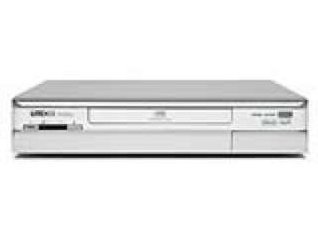TechRadar Verdict
Playback image of pre-recorded DVDs is great, but don't use the Lite-On for recording
Pros
- +
Stylish
Playback impressive
Cons
- -
Analogue tuner
Limited recording options
Poor recorded picture quality
Why you can trust TechRadar
Standing apart from the design crowd, Lite-On has produced a deck that actually looks more like a high-tech games console than a DVD recorder. A regular DVD recorder still lurks inside. You can record on to DVD±R/RW discs in five modes, giving one, two, three, four or six hours of recording on a single disc. You can't record on to dual-layered discs, however, so extra capacity of these double decker platters is not available.
The built-in tuner is analogue only, so it's going to be obsolete in just a few years from now. This means that the ability to connect a digibox is of paramount importance. So, it's a shame to report that the input Scart socket cannot accept an RGB signal. The output Scart is RGB-capable, and there are component video outputs for progressive scan signals as well, so Lite-On is not unaware of the benefits of these high-quality video connections.
More disappointment comes with the editing list. You can't partially erase a programme (meaning that you can't easily cut out commercial breaks or trim the beginning and end of a programme to get rid of unwanted material). All you can do is select an entire title, give it a name and protect it from accidental erasure - barely more than you can do with a VHS tape.
Chapters can be added automatically, but if you want to manually insert them, you can only do so while the recording is taking place, not after the fact, so carefully positioning them where you want them is not possible. Multimedia playback is more impressive, with JPEG, MP3 and WMA files all welcome, and a VOD code for DivX files. The Easy Guider system is also very well designed and can make first-time users feel at home with the nicely designed and straightforward menu system.
We didn't expect great things given that input Scart, but even so we were disappointed by the picture captured: pristine RGB pictures from a Sky box are turned into far inferior images when looped through the Lite-On. Contrast seems to have been turned up to unpleasant levels and there is a lot of fizzing onscreen. This is particularly noticeable around onscreen text or logos.
On the hour
The picture is captured perfectly in the one-hour mode, but that includes nasty artefacts and bleaching out as well. The picture steadily deteriorates as the lower recording modes are engaged, and the six-hour setting is unusable. There is horrible artefacting and strobe effects.
But, to finish on a high note, the playback image of pre-recorded DVDs is in a different galaxy. The RGB Scart delivers a rich image that is full of the subtle detail and bold colour rendition that we've grown to love from the format. As a recorder, though, this deck is best avoided.
Sign up for breaking news, reviews, opinion, top tech deals, and more.
Tech.co.uk was the former name of TechRadar.com. Its staff were at the forefront of the digital publishing revolution, and spearheaded the move to bring consumer technology journalism to its natural home – online. Many of the current TechRadar staff started life a Tech.co.uk staff writer, covering everything from the emerging smartphone market to the evolving market of personal computers. Think of it as the building blocks of the TechRadar you love today.
